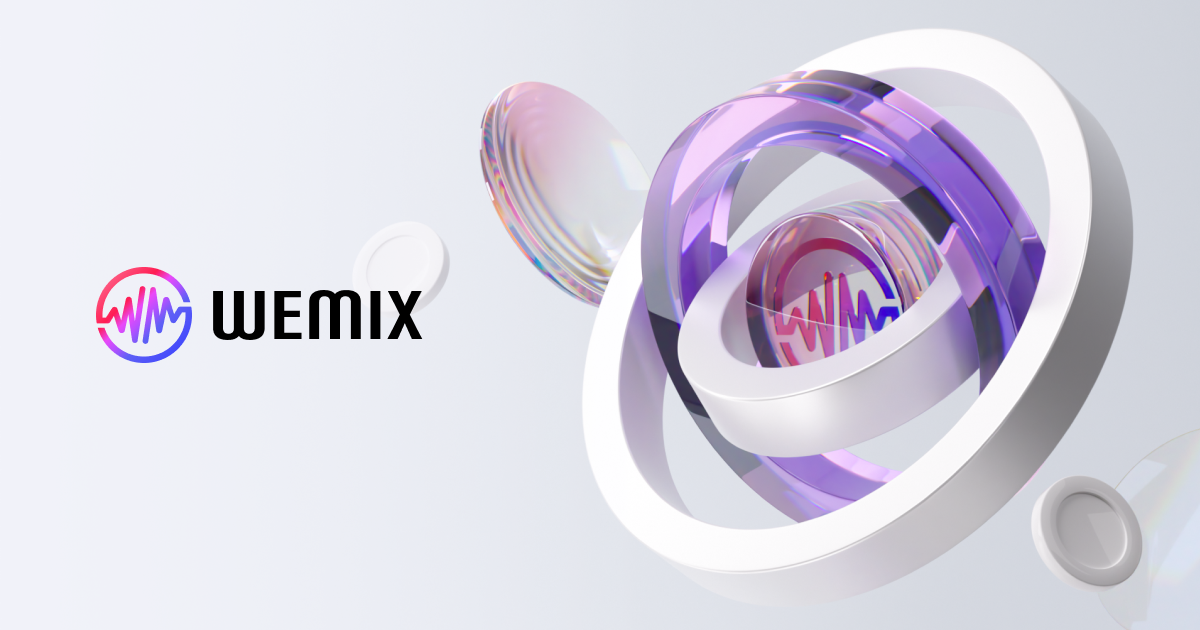
USDT, or Tether, is the world’s most widely used stablecoin in the cryptocurrency market. Unlike Bitcoin or Ethereum, which can experience significant price fluctuations, USDT is designed to maintain a stable value pegged to the US dollar at a 1:1 ratio. This means one USDT token is always meant to be worth exactly one US dollar, making it an important bridge between traditional and decentralized finance.
For beginners entering crypto space, understanding USDT is crucial as it serves as a safe haven during market volatility and provides a familiar unit of account. This guide will explain everything you need to know about USDT, from its basic concept to its uses, benefits, and how to get started with it.
Key Takeaways
- Tether (USDT) is a stablecoin pegged to the US dollar at a 1:1 ratio, designed to maintain price stability amid cryptocurrency market volatility.
- USDT is the most widely used stablecoin with more than 350 million users globally and has maintained the highest trading volume among cryptocurrencies since surpassing Bitcoin in 2019.
- Users can hold and transfer USDT on multiple blockchain networks including Bitcoin’s Omni Layer, Ethereum (ERC-20), Tron (TRC-20), and Solana, each offering different transaction speeds and fees.
- USDT serves as a crucial bridge between traditional finance and cryptocurrencies, offering traders a familiar unit of account and a safe haven during market turbulence.
- Despite facing regulatory challenges and questions about its reserve backing, USDT maintains approximately 70% of the stablecoin market share.
- For traders looking to get started with USDT, MEXC provides a secure platform with simple deposit processes, support for multiple USDT networks, and competitive trading fees.
Table of Contents
What is USDT (Tether)?
USDT (USD Tether) is a type of cryptocurrency classified as a stablecoin, designed to maintain a fixed value by being pegged to the US dollar. The name “Tether” reflects this linkage, as the value of the coin is “tethered” or pegged to the US dollar. This term highlights its role in bridging the gap between the stability of traditional fiat currencies and the flexibility of digital assets.
As a stablecoin, USDT addresses one of the biggest challenges in the cryptocurrency world—extreme price volatility that’s common among most Bitcoin and altcoin markets. By maintaining a steady value equal to one US dollar, USDT allows users to:
- Store value in a digital form without worrying about dramatic price changes
- Easily understand the value of their holdings in familiar terms
- Move money between different cryptocurrency platforms quickly
USDT is issued by Tether Limited, a company that maintains dollar reserves to back the digital tokens they create. The full form of USDT combines “US Dollar” (USD) and “Tether” (T), representing its connection to the dollar.
History of USDT
Tether has played a significant role in the evolution of the cryptocurrency ecosystem. Below is a brief overview of its key milestones:
- July 2014: Originally launched as “RealCoin” by Brock Pierce, Reeve Collins, and Craig Sellars.
- November 2014: Rebranded as “Tether,” with the first USDT tokens issued on the Bitcoin blockchain via the Omni Layer protocol.
- January 2015: Bitfinex became the first major exchange to list USDT for trading.
- 2017-2018: USDT’s circulation surged from approximately $10 million to $2.8 billion amid the cryptocurrency boom.
- 2019: Tether surpassed Bitcoin in trading volume, becoming the most traded cryptocurrency in the world.
- 2021-Present: Despite facing regulatory challenges and questions about its reserves, USDT has maintained its position as the dominant stablecoin with the largest market capitalization among stablecoins.
Over time, Tether has expanded its issuance beyond the Bitcoin blockchain to networks such as Ethereum, Tron, Solana, and others, enhancing its accessibility and utility across the broader digital asset landscape.

How Does USDT Work?
USDT operates on a straightforward yet effective model: for every USDT token issued, Tether Limited asserts that it holds an equivalent value of U.S. dollars or equivalent reserves. This one-to-one backing mechanism is designed to ensure the stability of USDT’s value.
The USDT system functions as follows:
- Issuance: When users deposit US dollars into Tether Limited’s bank account, the company creates an equivalent amount of USDT tokens.
- Circulation: These USDT tokens can then be transferred between users on various blockchain networks.
- Redemption: Users can redeem their USDT for US dollars by sending the tokens back to Tether Limited.
- Proof of Reserves: Tether publishes regular attestations about their reserves to assure users that all tokens are fully backed.
USDT exists on multiple blockchain networks, giving users flexibility in how they use it:
- Omni Layer (Bitcoin): The original platform for USDT
- ERC-20 (Ethereum): Popular for decentralized finance applications
- TRC-20 (Tron): Known for faster transactions and lower fees
- SPL (Solana): Offers high-speed, low-cost transactions
- Other networks including Algorand, Avalanche, and EOS
Each network has its own characteristics regarding transaction speed, cost, and integration with other services, allowing users to choose the one that best fits their needs.
USDT’s Market Cap and Position
USDT holds a dominant position in the cryptocurrency market:
- Market Capitalization: As of April 2025, USDT’s market cap exceeds $100 billion, making it one of the largest cryptocurrencies by value.
- Trading Volume: USDT accounts for the highest daily and monthly trading volume of any cryptocurrency, even surpassing Bitcoin.
- Stablecoin Dominance: USDT holds approximately 70% market share among stablecoins, demonstrating its widespread adoption.
- User Base: Tether reports having more than 350 million users worldwide.
USDT’s significant market presence stems from its usefulness as a trading pair on exchanges. Most cryptocurrency exchanges offer USDT pairs for major cryptocurrencies, making it easier for traders to enter and exit positions without converting back to fiat currencies. This utility has cemented USDT’s position as a cornerstone of cryptocurrency market infrastructure.
What is USDT Used For?
USDT serves multiple purposes in the cryptocurrency ecosystem:
Trading and Exchange
- Acts as a stable trading pair for other cryptocurrencies
- Allows traders to quickly move in and out of volatile crypto positions
- Provides a consistent unit of account for pricing assets
Store of Value
- Offers a way to hold value in the crypto ecosystem without exposure to market volatility
- Serves as a “safe harbor” during turbulent market conditions
- Enables users to keep funds ready for investment opportunities
Transfers and Payments
- Facilitates cross-border transfers without traditional banking delays
- Provides lower fees compared to conventional international wire transfers
- Allows for 24/7 transactions, unlike traditional banking systems
Decentralized Finance (DeFi)
- Used as collateral in lending protocols
- Provides liquidity in decentralized exchanges
- Enables yield farming and staking opportunities
These versatile applications have made USDT an essential tool for cryptocurrency users ranging from casual investors to professional traders.

Benefits of Using USDT
USDT offers several advantages that have contributed to its widespread adoption:
Price Stability
- Maintains a consistent value tied to the US dollar
- Protects against the volatility common in other cryptocurrencies
- Provides a familiar unit of account for pricing and transactions
Accessibility
- Available on multiple blockchain networks
- Supported by most major cryptocurrency exchanges
- Can be sent and received globally without geographic restrictions
Transaction Efficiency
- Faster settlement than traditional banking systems
- Lower fees for international transfers compared to bank wires
- 24/7 availability without banking hours limitations
Flexibility
- Easily convertible to other cryptocurrencies
- Can be stored in various wallet types (exchange, software, hardware)
- Usable across different blockchain ecosystems
These benefits make USDT particularly valuable for those who want to participate in the cryptocurrency market while minimizing exposure to price volatility.

USDT Risks and Controversies
Despite its popularity, USDT has faced several controversies and potential risks:
Reserve Questions
- Historical concerns about whether Tether Limited actually holds enough dollar reserves to back all USDT tokens in circulation
- Changing statements about the composition of reserves, which now include assets beyond just cash
- Delays in providing comprehensive audits of reserves
Regulatory Challenges
- In 2021, Tether paid a $41 million fine to the US Commodity Futures Trading Commission for making misleading statements about its reserves
- Settled with the New York Attorney General for $18.5 million regarding allegations about reserve management
- Ongoing scrutiny from regulators worldwide as stablecoins attract more attention
Market Concerns
- Potential systemic risk to the cryptocurrency ecosystem due to USDT’s large market presence
- Allegations of USDT being used to manipulate Bitcoin prices, though these claims remain disputed
- Competition from other stablecoins like USDC, which some perceive as more transparent
Technical Risks
- Smart contract vulnerabilities on various blockchain platforms
- Potential for security breaches at Tether Limited
- Reliance on banking partners that could restrict services
Understanding these risks is important for anyone using USDT, though many users continue to trust the stablecoin despite these concerns.

How to Buy and Store USDT on MEXC
MEXC is a globally recognized cryptocurrency exchange known for its secure, intuitive, and feature-rich trading platform. It provides users with a seamless experience for acquiring and managing USDT. Follow the steps below to get started:
Depositing USDT to MEXC (Web)
- Log in to your MEXC account at www.mexc.com
- Click on Wallets and then Deposit in the navigation menu
- On the deposit page, search for and select “USDT”
- Choose the appropriate network (ERC20, TRC20, SOL, etc.) (Important: Ensure you select the same network as the sending platform to avoid loss of funds)
- Generate a deposit address if you don’t already have one by clicking “Generate Address”
- Copy this address or scan the QR code
- Use this address to send USDT from your external wallet or another exchange
- Wait for blockchain confirmation, after which your USDT will appear in your MEXC Spot account
Depositing USDT to MEXC (Mobile App)
- Open the MEXC App and tap on Wallets
- Select Spot and then Deposit
- Search for “USDT” in the list of cryptocurrencies
- Select your preferred network for the deposit
- Copy the deposit address or use the QR code
- Initiate the transfer from your external wallet using this address
- USDT will be credited to your account after blockchain confirmation
Important Deposit Tips
- Always verify the contract address when depositing tokens
- Some networks like EOS require both an address and MEMO field
- Be aware of minimum deposit requirements for certain tokens
- Blockchain confirmation times vary depending on network congestion
By following these steps, you can safely deposit USDT to your MEXC account and begin trading. Ready to start your cryptocurrency journey? Create an account on MEXC today and enjoy a secure platform for all your USDT transactions.
Future of USDT
The future of USDT appears both promising and challenging as the stablecoin landscape continues to evolve:
Expanding Use Cases
- Integration with more decentralized finance (DeFi) platforms
- Growing adoption for cross-border payments and remittances
- Potential use in emerging markets with unstable local currencies
Technological Developments
- Expansion to additional blockchain networks for greater accessibility
- Improvements in transparency and reporting mechanisms
- Enhanced security features to protect users
Regulatory Landscape
- Increasing regulation of stablecoins worldwide
- Potential requirements for more rigorous auditing and reporting
- Possible development of central bank digital currencies (CBDCs) as competitors
Market Competition
- Growing competition from other stablecoins like USDC, BUSD, and DAI
- Innovation in stabilization mechanisms and backing strategies
- Potential consolidation in the stablecoin market
As cryptocurrency adoption continues to grow globally, USDT is likely to remain a significant player, though its dominance may be challenged by regulatory developments and competing stablecoins with different backing models.

Conclusion
USDT has become essential in cryptocurrency, offering stability in a volatile market and serving as a bridge between traditional finance and digital assets. For beginners and experienced traders alike, having a reliable platform to trade and store USDT is crucial. MEXC provides a secure, user-friendly environment for all your USDT needs, supporting multiple networks with competitive fees and robust security measures. Ready to start your USDT journey? Create an account on MEXC today and join the millions of users who trust this leading exchange for their cryptocurrency transactions.
FAQs About USDT
1. Can USDT lose its peg to the US dollar?
Yes, USDT has briefly deviated from its $1 peg during market stress events. In May 2022, it fell to about $0.95 following another stablecoin’s collapse, though it quickly recovered. While designed to maintain the peg, various factors could potentially cause temporary or prolonged deviations.
2. What is the difference between USDT and USD?
USDT is a digital cryptocurrency token designed to mirror the value of the US Dollar (USD). While USD is a government-issued fiat currency, USDT is a privately-issued digital token that aims to maintain a 1:1 value ratio with the USD through reserve backing.
3. Is USDT safe to use?
USDT has been widely used for years, but comes with risks including reserve questions, regulatory uncertainty, and technical vulnerabilities. Most users consider it reasonably safe for short-term holdings and transactions, though many experts recommend caution for large or long-term holdings.
4. What’s the difference between USDT and Bitcoin?
Bitcoin is a decentralized cryptocurrency with a fluctuating value based on market demand, while USDT is a stablecoin designed to maintain a consistent $1 value. Bitcoin serves primarily as an investment and store of value, while USDT functions more as a stable medium of exchange and trading tool.
5. What is the difference between USDT and USDC?
Both are USD-pegged stablecoins, but USDT is issued by Tether Limited while USDC is issued by Circle and Coinbase. USDC is generally perceived to have greater transparency in its reserve backing and has stronger ties to regulated financial institutions in the United States.
Join MEXC and Get up to $10,000 Bonus!
Sign Up


